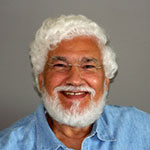January 26, 2011
Verdi's Aida
(Cairo) For a long time, opera Aida was on my to-see list. So I was pleased last week to find out that it was performing at the Cairo Opera House, only few steps from my hotel. The performance was to mark the 140th anniversary of its first performance in Cairo in 1871. The two hour performance was a delight.
Opera Aida had been commissioned by Egypt’s ruler Khedive Ismail Pasha for the opening of Cairo’s Royal Opera House. Since then it became an opera classic and had one of world’s best music composition by the Italian Giuseppe Verdi. It was based on a scenario written by French Egyptologist Auguste Mariette. It was performed around the world for millions of opera lovers for the last 140 years.
The historical Cairo’s Royal Opera House was burned down in 1971, but the new one I watched Aida at was still impressive.
Aida was performed over the years in Egypt, some at Ancient Egyptian historical sites. In 1987 it was performed at an open air stage with the Pyramids and Sphinx used as a backdrop, in 1994 it was performed at the Hatshepsut Temple in Luxor and in 1997, a performance was held against the backdrop of the Deir Al-Bahari Temple, also in Luxor.
The opera is based on a love story set in Ancient Egypt during the Old Kingdom, 5000 BC, and in four parts it captures all of humanity; love, jealousy, treason, power, religion, politics, peace and war.
Aida – meaning ‘returning’ in Arabic – was an Ethiopian slave girl, captured by the Egyptian army in a war between Egypt and her home country Ethiopia. Because she was from the royal family she was raised and lived in the Pharaoh palace as an entertainer to the Pharaoh’s daughter, of her own age. But the Egyptians were unaware of her true identity.
Egypt’s army chief Radames was much in love with Aida and Aida was also secretly in love with Radames.
When Aida’s father, the Ethiopian King, tried to invade Egypt to free his daughter, Egypt’s high priest recommended to the Pharaoh that Radames should lead the army to stop the invaders. Radames made two prayers; one to achieve victory and the second to marry Aida upon his return.
Radames’ first prayer was fulfilled; he defeated the Ethiopian army. He also captured the King not knowing that he was Aida’s father. In Egypt the father was united with his daughter at last, but both as slaves in the Pharaoh’s place.
To recognise the contributions of his army chief, the Pharaoh offered Radames his daughter to marry. Radames had to accept but his love to Aida was so much alive.
The Pharaoh’s daughter knew of her husband’s love of Aida. She tried hard to gain his love but she failed. So she started to spy on him. When she discovered that her husband was not only unfaithful to her but he was also unfaithful to his country and his King; he was conspiring to free Aida and her father and to join them later to marry Aida. The sad end was that Aida and Radames were sentenced to die together, to be buried alive in an underground grave.








